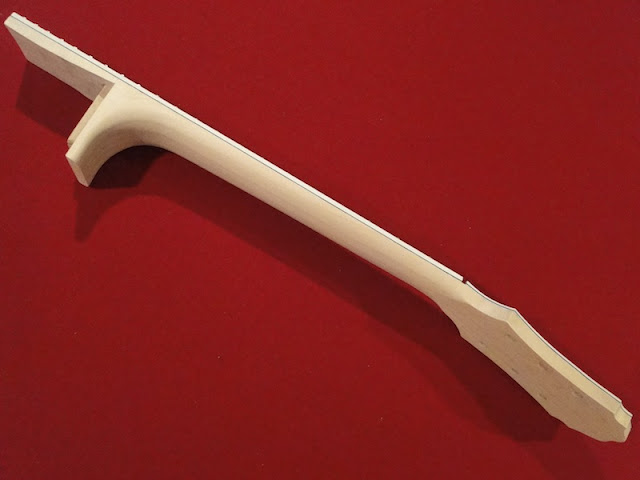The first is a really simple one. When you are working on a guitar while you are sitting, it is hard to see the LCD displays on small hand held metronomes and tuners. These easy to make plexiglass holders work great for propping the device up so you can see the display. Small sections of plexiglass were cut out and held in a vice while a heat gun was used to apply heat to the areas that need to be bent. The heat gun does a great job of getting the plexiglass just hot enough to bend but not so hot that it forms air bubbles in the plastic. These are quick and easy to make and are great presents for anyone who uses these common devices.
The other project was one that is aimed at making it easier to power up my studio set-up and at the same time save my monitor speakers from the power-up pops that occur if they are not the last thing turned on in the power up cycle.
This is a small box made of poplar that has the rack that I built for my mixer glued to its top. The bottom of the box comes off to access the inside. Two 120v 15A LED indicator light switches are mounted on the front and wired up to an outlets in the back. The mixer, guitar pedals and anything else are plugged into one power strip that is connected to the outlet wired to the switch on the left. The monitor speakers are plugged into a power strip that is plugged into the outlet connected to the switch on the right. The connection tab that normally joins the two outlets for wiring has been removed so they can function independently of each other. These switches are wired in such a way that the LED's come on when they are in the "on" position.
With this set up I can flip the switch on the left and wait a few seconds while all of the equipment powers up and then switch on the speakers. When I am done, I just reverse the process and switch off the speakers before powering down everything else. This way I can power everything up and down from one convenient location. A little cork on the bottom of the box keeps everything from sliding around on the "Strat-o-table."
Now I can get back to the archtop...













